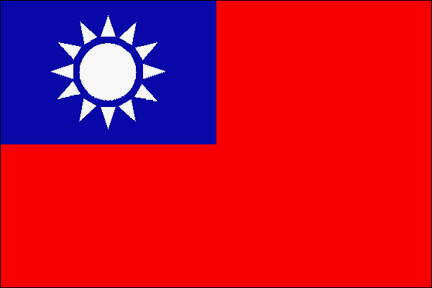






As the leading institution for the research, development, and design of defense technology in the ROC, the Chung-shan Institute of Science and Technology (CSIST) contains some 6,000 scientists and more than 8,000 technicians.
With its headquarters in Lungt'an, Taoyuan County, the CSIST has facilities stretching over nearly 6,000 acres scattered throughout Taiwan, and is divided into four major research divisions: aeronautics, missiles and rockets, electronics, and chemistry. The CIST has six centers for systems development, systems maintenance, quality assurance, materials R&D, aeronautic development, and missile manufacturing. Each research division or research center has a director in charge of the research and development of its specialty, while planning units have project chairmen responsible for R&D program management and system integration. The CSIST jointly conducts independent research and development of weapon systems with the Aero Industry Development Center , which is now under CSIST supervision; some manufacturing units of the Combined Services Force; academic institutions; and public and civilian industries.
To date, a number of weapon systems have been domestically designed, tested, and produced on a mass scale by the CSIST. These include the Kung-feng 6A rocket, the Hsiung-feng I and Hsiung-feng II SAMs, artillery fire control systems, naval sonar systems, naval electronic warfare systems, and the Tzu-chiang trainer aircraft. The CSIST has produced or plans to produce Tien-kung I and Tien-kung II SAMs, and Tien-chien AAMs. The institute is also developing the Tien-chien II AAM system.
The CSIST First Institute is engaged in developing combat aircraft of newer generation with greater combat radius and multiple functions. The "Aviation Institute," originally set up by the government in Szechwan in 1939, and was renamed the "Aero Industry Development Center" [AIDC] in 1969. On 01 July 1996, the AIDC was placed under the Ministry of Economic Affairs and became the "(Han Hsiang) Aerospace Company, Ltd." Its First Institute remains under the CSIST. The CSIST Second (Missile and Rocket) Institute is mainly responsible for the missile and rocket development under the CSIST overall planning, engaging in research and development concerning jet propulsion, aerodynamics, structure, inertia guidance, flight control, fuse, precision machinery designing and manufacturing, and flight test. To meet future needs in the development of high-tech weaponry, it also conducts research and development on forward-looking key technologies and specific-need national defense technologies. In addition, the Second Institute is also engaged in the development of relevant weapon systems. The CSIST Third Institute is mainly responsible for the research and development of electronic warfare equipment of the armed forces. After 28 years of independent operation, it has a research and development capability in electronic warfare, communications, radar, antenna, command control communications and information, guidance and control, underwater weaponry, key parts and elements, and production reliability. The designing of the electronic homing devices and anti-jamming devices for Hsiung Feng, Tien Kung and Sky Sword missiles constituted an important part of the institute's research and development effort.The work of the CSIST Fourth (Chemistry) Institute covers seven categories -- propellant fuel, gun powders and explosives, warhead, chemical warfare defense, detection prevention, moisture and corrosion prevention, and photoelectric chemistry -- under the national defense strategic objectives. The fourth Institute has gone through four stages of growth. The first stage (1969-1975) was a foundation-laying and qualified personnel cultivation period. The second stage (1977-1982) was a period in which the institute laid a foundation in military chemistry with the main tasks of solving chemical problems for the armed forces, implementing the research and development results concerning chemical warfare defense, and research and development of gun powders and explosives, propellant fuel, high-efficiency incendiary agent, and moisture and corrosion prevention. During the third stage (1983-1988), the institute was engaged in development of chemical warfare defense equipment and supporting the armed forces in solving chemical warfare-related problems, along with the development of missile propellant grain, designing of special warhead, test and development of explosive charges and special priming materials, development of high-energy fuel oil and special high-molecular materials. During the fourth stage (1989-present), the institute consolidated its research and development work according to the policy direction of the national defense strategic objectives.
